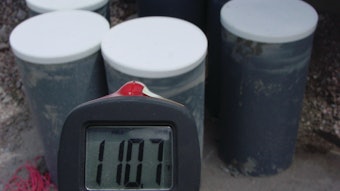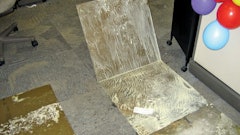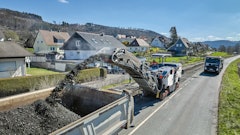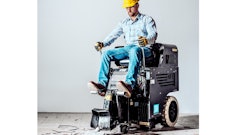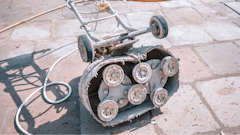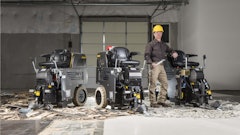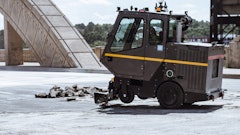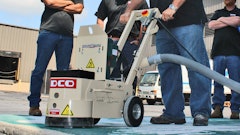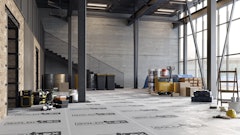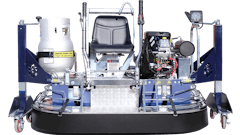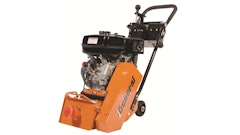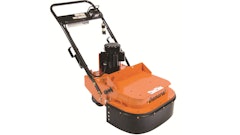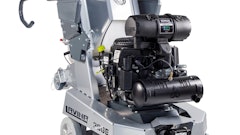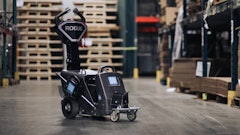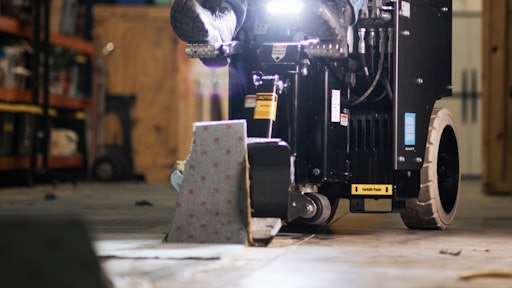
According to health and safety consultant, Arinite, construction is the fourth most dangerous sector to work in globally. Contractors and machine operators are clearly most at risk, but they can also be the most influential in understanding how to improve on-site safety. How can equipment manufacturers learn from contractors to create a safer industry? Better yet, how do you lift a 200 lb. flooring machine onto a trailer, drive it to a jobsite, unload it, take it up two flights of stairs, and complete a flooring job without ever risking injury? By choosing machines designed with safety in mind.
Transporting machinery to a site can be challenging. While it may feel more like simple logistics rather than a safety risk, lifting machinery onto transport, up flights of stairs, or across rooms when on the jobsite could cause injury. Designing machinery for safe and secure transit can help protect staff and members of the public.
Fork pockets, for example, improve safety when moving large ride-on machines with a forklift. The forks slot into pockets fitted to the machine’s underside, keeping it stable during transit. Manufacturers can also include features like anchor points for securing the equipment or lifting arms for hoisting it into position.
Walk-behind scrapers, while smaller, can still be difficult to maneuver. Modular scraper designs or removable weights are helpful, particularly when carrying the machine upstairs in buildings lacking an elevator.
Good working practices help mitigate risks to contractors on site. Proper dust management, for example, is essential as surface preparation jobs like grinding, scarifying, and shot blasting create dust, which is harmful if inhaled. Using a dust collector fitted with a high-efficiency particulate air (HEPA) filter removes microscopic particles, which are often the most dangerous.
In addition, frequently using heavy equipment that requires high operator input can lead to musculoskeletal symptoms. Machines with independently powered wheels, on the other hand, offer enhanced maneuverability, enabling them to pivot and turn independently with little operator input, significantly reducing operator fatigue and enhancing efficiency.
Likewise, machines that give contractors increased control can provide a safer working environment. Unlike conventional floor scrapers that operate on a binary on/off mode, modern advanced scrapers offer comprehensive customization of speed and blade oscillation, ensuring optimal performance and operator safety.
Communication is also key to creating a safe working environment. For instance, contractors should inform facility managers of any issues that arise during a job to reduce the risk of injury while on site. To make a long-term change, contractors can also collaborate with equipment manufacturers, sharing their on-site experiences to understand what new machine features could help improve safety for construction workers throughout the industry.
The introduction of health and safety measures has helped the construction industry make significant steps to improve safety, but it’s clear that continuous work on heavy-duty machinery can put contractors at risk. Equipment manufacturers can play an integral role in further improving safety by listening to machine operators. By adapting machines to contractor feedback, manufacturers can design flooring equipment that delivers productivity but also keeps the operator out of harm’s way.





